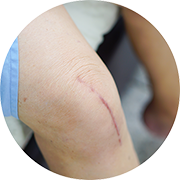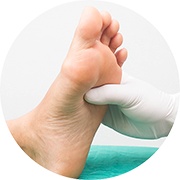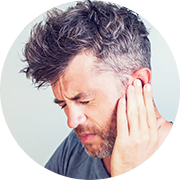

KNOW YOUR PAIN
Usually, the feeling of pain (pain sensation) alerts a person to a disease, injury or physical threat, with the purpose of protecting the body from further damage. When the damaged area has healed, the feeling of pain should decrease and disappear. Chronic (long-lasting) pain, however, can exist even after the injury has healed and often serves no useful purpose.1 Read more about chronic pain here.
Pain is a very common problem; in fact, one in five people in Europe suffers with chronic pain.2 Besides the pain itself, individuals suffer not only physically but also emotionally, psychologically and socially.3 Despite the broad impact of pain, it can often be invisible to others, leading to friends, family and colleagues dismissing those with pain and not empathising with their suffering.4 This is why improving pain awareness and understanding among people with chronic pain and healthcare professionals, as well as improving how these two groups communicate with each other, are the goals of the CHANGE PAIN initiative.
For everyone suffering from pain, and especially from chronic pain, it may be important to know the possible reason behind this suffering. You can click on the links below to find out information about some chronic pain conditions, particularly those that are related to nerve damage.
-
References
1. Orr PM, et al. Crit Care Nurs Clin North Am. 2017;29:407–18.
2. Breivik H et al. Eur J Pain. 2006;10(4):287–333.
3. Treede RD, Rief W, Barke A, et al. Chronic pain as a symptom or a disease: The IASP Classification of Chronic Pain for the International Classification of Diseases (ICD-11). Pain 2019; 160: 19–27.
4. Myers W & Bass PF. Everyday Heal. 2015.







